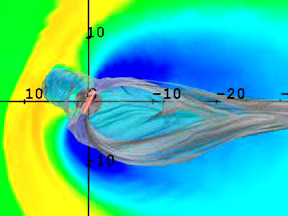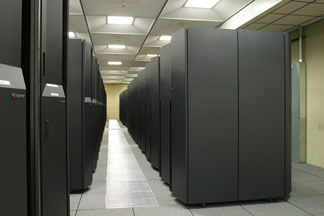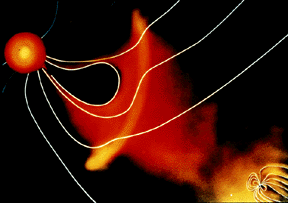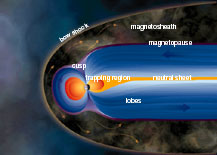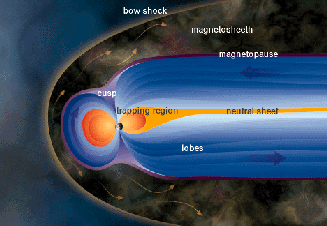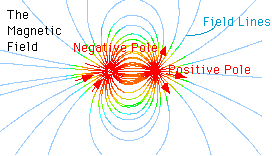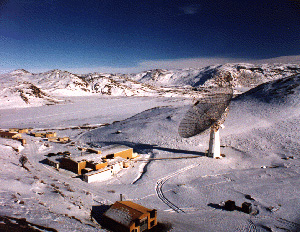Click on image for full size
Image courtesy of the Space Plasma Physics group (with help from the Advanced Visualization Laboratory) at University of Maryland.
Modeling Space Weather
Space weather is a very complex scientific field. Scientists who study space weather use computer models a lot. Space weather is a bit like weather on Earth in this way because weather forecasters on our planet also use complex models to predict weather and climate.
Space weather researchers have to blend together different models covering the Sun's interior, the solar atmosphere, interplanetary space, Earth's magnetosphere, and Earth's atmosphere. These separate models must work together smoothly at their borders.
Predictions generated by models should match data from actual events. Scientists compare results from models with real events to verify the accuracy of their models, fine tuning the evolving models as they go. Successful models generate data that matches well with reality in a wide range of circumstances. Some hybrid models blend actual data with the models' predictions.
What are space weather models used for? One use is forecasting and prediction. If we observe an event of the Sun, a model can predict its impact near and on Earth. When a big space weather storm is coming, we can warn spacewalking astronauts, put orbiting satellites into "safe" modes, and anticipate spectacular auroral displays. Models can also help us improve our understanding of natural phenomena and the laws of physics by taking advantage of a natural laboratory that produces conditions, such as high temperatures, powerful magnetic fields, or large distances, that are unattainable in Earthly laboratory settings. Improving our understanding of physical laws in extreme conditions often aids our ability to better apply those laws in more mundane settings.


